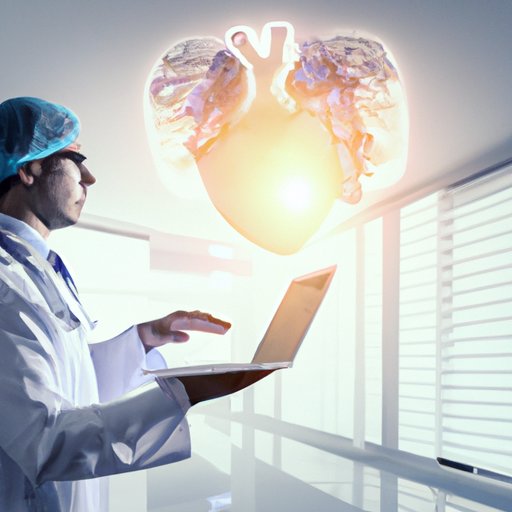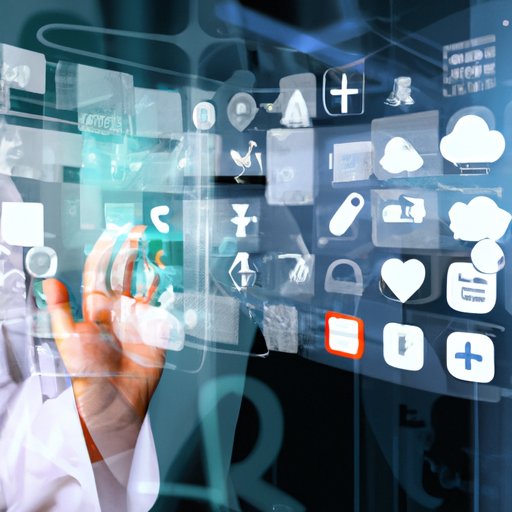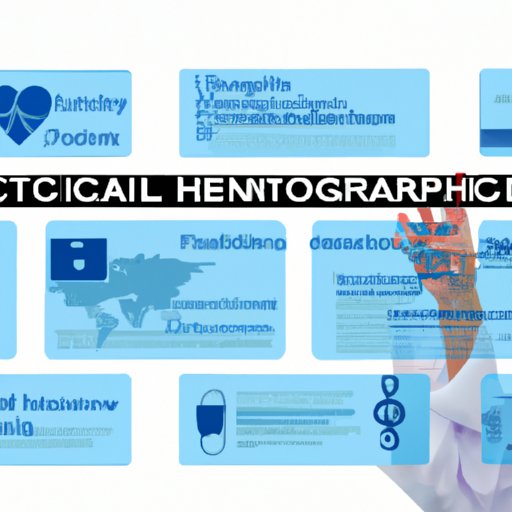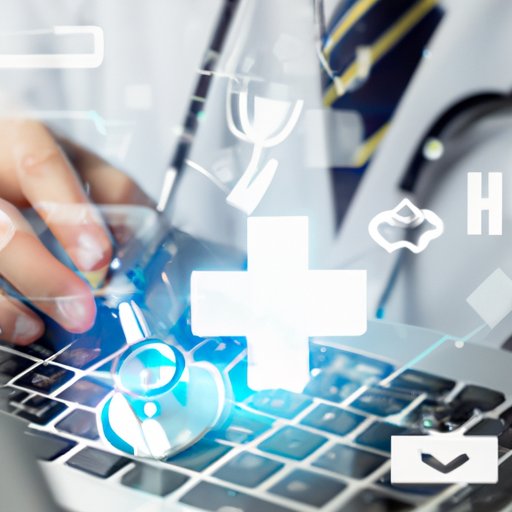Introduction
Information technology (IT) is a rapidly growing field that has revolutionized many industries, including healthcare. IT involves the application of computers and telecommunications to store, retrieve, transmit, and manipulate data. It is used to facilitate the exchange of medical information between healthcare providers, such as hospitals, clinics, and laboratories.
The use of IT in healthcare has greatly improved patient care and outcomes. With IT systems, medical professionals can access patient records quickly and accurately, enabling them to make more informed decisions about treatments and medications. In addition, IT allows for improved communication between healthcare providers, reducing the time it takes to diagnose and treat patients.

Exploring the Impact of Information Technology on Healthcare
The use of IT in healthcare is transforming the way medical services are delivered. According to a study by the National Center for Biotechnology Information, “the integration of IT into healthcare delivery systems has enabled clinicians to provide better quality care and improve patient outcomes.”
IT systems have enabled healthcare organizations to streamline processes, such as patient registration, billing, and scheduling. By automating these tasks, providers can save time and money while improving efficiency. As a result, they can focus more on providing quality care to their patients.
In addition, IT has enabled healthcare organizations to collect and analyze large amounts of data. This data can be used to identify trends in patient care and develop strategies for improving outcomes. For example, data analysis can help providers determine which treatments are most effective and which interventions may need to be adjusted.
Benefits of Information Technology in Healthcare
There are many benefits to using IT in healthcare. One of the most significant benefits is increased patient safety. With IT systems, medical professionals can track patient records and monitor vital signs remotely. This helps them identify potential problems early and take steps to address them before they become serious.
IT also improves access to care. By connecting healthcare providers to each other, IT enables patients to get the care they need regardless of location. This can help ensure that patients receive timely and appropriate care, even if they live in rural or underserved areas.
Finally, IT can improve the accuracy of medical diagnoses and treatments. By storing patient data electronically, healthcare providers can quickly and easily access comprehensive patient histories. This can help them make more informed decisions about treatments and medications.
Examining the Role of Electronic Health Records in Modern Healthcare
Electronic health records (EHRs) are an essential component of modern healthcare. EHRs are digital versions of traditional paper-based medical records. They store patient data in a secure and organized manner, allowing healthcare providers to access a patient’s complete medical history quickly and easily.
EHRs enable healthcare providers to view patient data from multiple sources, such as lab results, prescriptions, and doctor’s notes. This information can then be used to make more accurate diagnoses and develop effective treatment plans. In addition, EHRs can help reduce paperwork and administrative costs, as well as reduce errors caused by manual data entry.

Adopting Information Technology Solutions in Healthcare
Implementing IT solutions in healthcare can be challenging. Organizations must consider various factors, such as cost, compatibility, and security. Additionally, there may be resistance from staff members who are unfamiliar with the new technology and do not understand how it will benefit them.
Organizations should also be aware of the potential risks associated with IT solutions. For example, if data is not properly secured, it could be vulnerable to cyberattacks. To minimize these risks, organizations should invest in strong IT security measures. Additionally, they should ensure that all staff members are properly trained in the use of IT systems.

Analyzing the Challenges of Implementing Information Technology in Healthcare
Despite the potential benefits of IT solutions, there are still challenges associated with implementing them in healthcare. One challenge is the high cost of purchasing and maintaining IT systems. Additionally, organizations must ensure that their systems are up to date and compliant with industry regulations. Finally, they must ensure that their systems are secure and reliable.
Another challenge is data privacy. Healthcare providers must protect patient data from unauthorized access and use. To do this, they must implement robust security measures, such as encryption and two-factor authentication. Additionally, they must ensure that all staff members are properly trained in data security protocols.
Conclusion
The use of IT in healthcare has revolutionized the way medical services are delivered. IT systems have enabled healthcare organizations to streamline processes, collect and analyze data, and improve patient safety. In addition, EHRs have enabled healthcare providers to access comprehensive patient histories quickly and easily.
However, implementing IT solutions in healthcare can be costly and challenging. Organizations must consider various factors, such as cost, compatibility, and security. Additionally, they must ensure that their systems are secure and reliable, and that all staff members are properly trained in the use of IT systems.
Overall, IT has had a positive impact on healthcare, and its use is likely to continue to grow in the future. As organizations continue to adopt IT solutions, they should strive to ensure that these solutions are secure, reliable, and cost-effective.
(Note: Is this article not meeting your expectations? Do you have knowledge or insights to share? Unlock new opportunities and expand your reach by joining our authors team. Click Registration to join us and share your expertise with our readers.)
